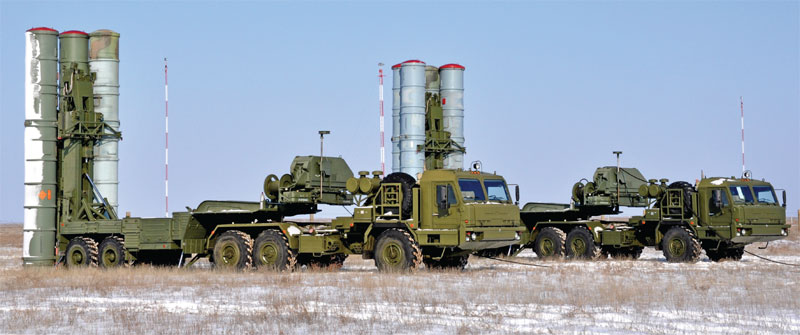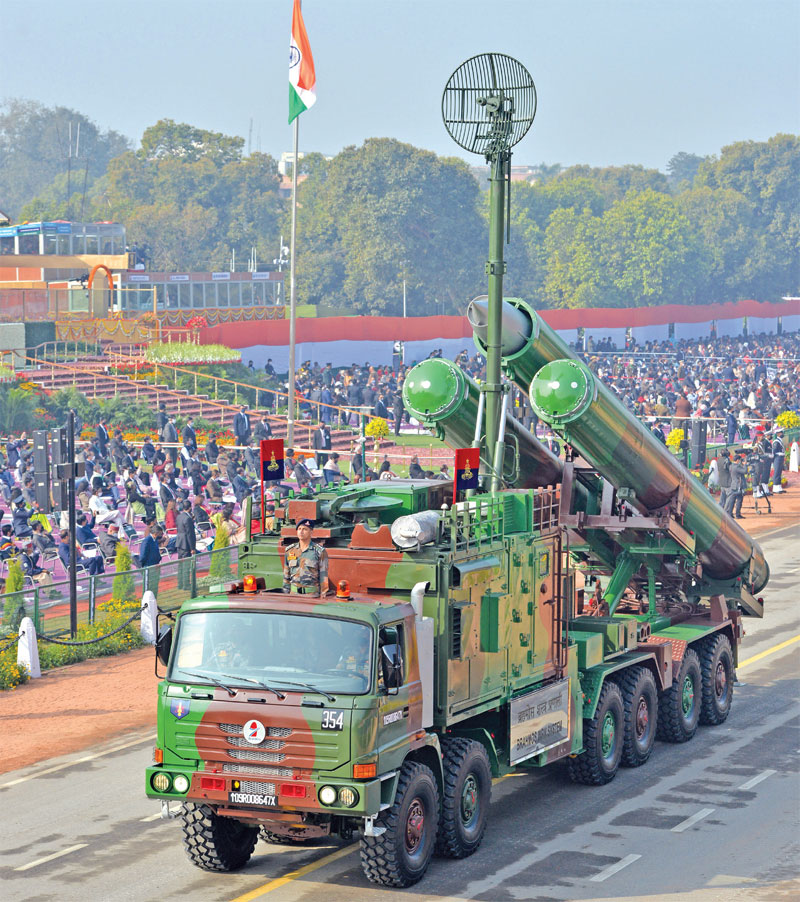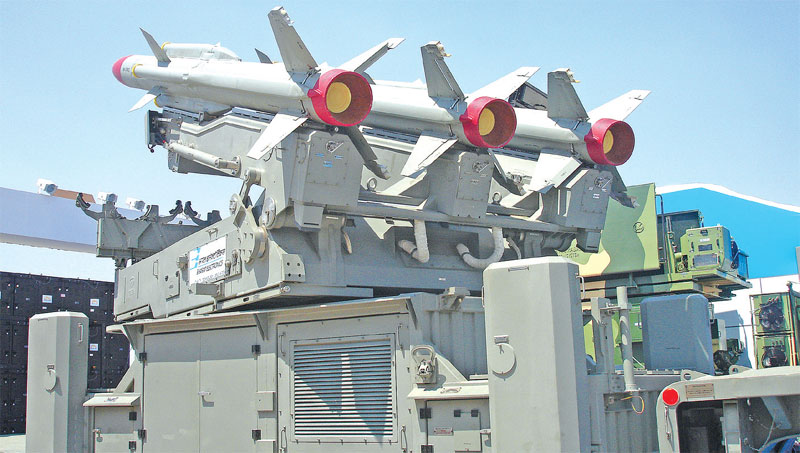To achieve effective air defence, India needs to have an integrated Command & Control system
 Col Mandeep Singh (retd)
Col Mandeep Singh (retd)
In the early hours of 26 February 2019, 12 Indian Air Force’s (IAF) Mirage 2000 fighter jets crossed the Line of Control and destroyed the Jaish-e-Mohammad training camp in Balakot killing a ‘large number of terrorists.’ The following day, Pakistan retaliated and in the ensuing air battle, a Pakistani F-16 was shot down while India lost a MiG-21, and its pilot was taken prisoner. Meanwhile, an IAF Mi-17 helicopter was brought down by friendly fire; reportedly the first instance of fratricide involving IAF ground based surface to air missiles (SAM).
A Court of Inquiry instituted by the IAF reported that ‘the “Identification of Friend or Foe” (IFF) system on-board the helicopter was switched off and there were “vital gaps” in communication and coordination between the ground staff and the crew of the chopper’. It also found violations of standard operating procedures.
A year later, on taking over as India’s first Chief of Defence Staff, General Bipin Rawat in his very first meeting directed Headquarters Integrated Defence Staff (IDS) to prepare a proposal by 30 June 2020 for the creation of Air Defence Command (ADC). While the reasons for going in for the same were not immediately known, General Rawat did mention in an interview that one of the reasons for the proposed air defence command was the need to avoid fratricide.
According to one of the news reports, the CDS said that the defence of the airspace is critical, and somebody has to be responsible for that. ‘That responsibility has been given to the IAF. But the resources to defend the air space are with three separate services. Should this not be coordinated? Or should you keep hitting your own aircrafts and UAVs? If you have to ensure there is no fratricide, for every weapon system fired in the right time at the right aircraft, the command and control instructions should come from one entity. As of now it’s not,’ the report quoted him.

The emphasis seemed to be on preventing fratricide and having unified ‘command and control (C2)’. Both are laudable goals but having an ADC to achieve these is to miss the point. The incident mentioned above was of an IAF missile shooting down its helicopter. It was the same service, same command and yet the accident occurred. The reason was communication failure and lack of coordination within the same command. The only way to prevent, or reduce, fratricide is to have fail-safe communications and an effective C2 system. Creating commands is not going to address the issue. The reason for this misconception is that the nuances of air defence (AD) and AD operations are often not understood properly.
The Basics
Firstly, air defence is more than just aircraft and guns and missiles. It encompasses ‘all measures designed to nullify or reduce the effectiveness of hostile air action’. It includes not only the air force and air defence artillery but all weapons that can be fired at an aerial target.
It may be easy to write off use of other weapons against aircraft or aerial platforms but experience over the years have shown that losses to ground fire are a major cause of attrition and not something that is easy to ignore. It is pertinent to note that not all aircraft and helicopters are hi-tech, fifth or fourth generation aerial platforms. The adversary’s air effort will include legacy aircraft and simpler platforms like drones and cruise missiles that are vulnerable to ground fire.
From the ‘Hanoi Habit’ of shooting at the United States (US) aircraft using rifles during the Vietnam War to use of tank main gun to shoot down a Pakistani helicopter, these weapons have proven to be effective. If the ‘ground fire’ was what deterred the drones in the recent incident at Jammu, it was also the major cause of US losses in air in Iraq and Afghanistan—this in case of the most advanced air force in the world. The ground fire can be equally deadly against own aircraft and other aerial platforms like drones. Discounting the same while formulating any AD plan can only be counterproductive.
Secondly, air defence operations form a part of counter-air campaign and are not a stand-alone operation that can be conducted in isolation. For the air force, resources like aircraft can be switched from offensive to defensive operations (and the vice-versa) but it may not always be so in case of Ground Based Air Defence Weapon Systems (GBADWS) though their use in offensive role use is possible.
Thirdly, there are no pure ‘defensive’ weapons. All defensive weapons can be used in offensive role. From use in ambushes by MANPADS (man-portable air defence system) to denying the airspace as A2/AD operations, GBADWS have been used aggressively, in offensive missions, over the years. The long-range SAMs, which are part of S-400 Air Defence Missile System, are particularly suited for offensive role as they can engage targets well in-depth areas of the adversary. Even guns and missiles (like Air Defence Anti-Tank System) can be used in direct firing role. Limiting the use of AD assets only for defensive operations under the ambit of ADC would thus be gross under-utilisation and a waste of resources.
Fourthly, command and control of AD weapons, particularly the GBADWS with the Army Air Defence in our case, is exercised differently as compared to others and is done through two different agencies for a good reason. ‘Command’ of GBADWS is of the unit or sub-unit and includes authority to deploy, move, train and administer it while ‘control’ refers to the authority to control its fire. The command of AD resources is exercised by the field (or tactical) commander while the control is through the ‘Control & Reporting (C&R) System’ with air force at the apex. The two (command and control) can be exercised by one agency only if the GBADWS is not under a field (or theatre) commander.

Other ConcernsJust as AD involves more than just air force and air defence artillery, there are multiple users of air space and not only the air force. These users are field artillery, army aviation, infantry, armed police forces and the civil aviation. It will also include unregulated users of air space like drones and the rogue non-state actors using both manned and unmanned aerial systems.
With proliferation of airspace users, the air threat spectrum is getting wider and there is an increased use of unmanned systems that give little or no reaction time. Of these, drones and cruise missiles are likely to be used extensively both in conflicts and peace. They are difficult to detect and engage with legacy AD systems. With hypersonics making their advent in our immediate neighbourhood, things are going to get more challenging in terms of detecting these threats in time.
Wider spectrum of air threat necessitates use of wider range of systems, both active and passive, to counter them. The legacy systems may be able to ‘shoot down’ aerial platforms but the target handing capability and their (in)ability to be integrated with futuristic C&R system and new-gen AD systems will remain a challenge.
The emerging threats will need directed energy and passive soft-kill systems to counter them. Their effectiveness has been demonstrated often, with the use of Russian EW systems to ‘drop’ drones during the attack on Khmeimem air base being one such example. Similarly, Turkey has already operationalised a directed energy system to counter drones. These systems that operate in the electro-magnetic domain will need close co-ordination with other users to prevent interference. More importantly, with time at a premium, these will need decentralised control and not through some apex body controlling all operations.
The Core Issue
The main issue of concern is integrating operations by all users of air space to give them maximum freedom of action while ensuring their safety. Given multiple airspace users, it can only be done by having control by a single agency. Similarly, the need to prevent fratricide while engaging hostile aerial platforms also implies having a central control. However, the dichotomy in having centralised or decentralised control is when one considers the requirement of countering low reaction threats like drone and missiles.
A balance between central/ decentralised control can be achieved by having a robust C&R system for sharing surveillance data, backed by an efficient communication network and well laid down protocols and standard operating procedures. With these, control can be decentralised to an appropriate authority for specified activities. In case of AD operations, it could be delegated to the command (and now the theatre) level.
Operationalising the ADC
Sharing of information and passage of control orders through a time responsive C&R system being the only method, it needs to be seen how the ADC will implement this. Going by what is available in the public domain, there is much to be worried about its viability and efficacy.
ADC as the ‘one’ centre will require coordination with each and every ground-based theatre command for all air operations. The coordination will also be required with civil aviation and other users for all transit and operational moves. To add, the offensive and defensive air missions, including close air support, interdiction, reconnaissance, missile launches, drone operations and long-range rocket/ artillery fire would require further coordination. It would also be required in case of Army Air Defence (AAD) supporting and defending the field formations and assets. Adding to these will be the internal dynamics of ADC that ‘may make it (ADC) sub-optimal’.
The reason of this apprehension is not misplaced as the ADC will also need to be involved in employment of strategic AD systems like S-400, ballistic missile defence and the national advanced missile defence systems. With so many agencies to deal and coordinate with, the only way forward is decentralisation. Specifically, within a theatre it will not be possible to exercise central control over air and AD operations due to their dynamic nature.
Similarly, use of offensive systems like long range rockets and missiles that need co-ordination with AF to prevent fratricide will be better controlled at theatre level and not by the ADC. As will be the case in use of S-400 to deny access and take on other threats. If the ADC controls these assets, it will mean transgressing into the domain of theatre air operations and that can only result in an unmitigated disaster.

Drawbacks
The ADC has some inherent drawbacks; the main being that it will infringe upon the theatre domain and will inhibit their air operations. This may appear paradoxical but if all operations are to be undertaken only after getting the ‘AD clearance’ from the ADC, it is but obvious that due to time constraints some air operations will get delayed/ inhibited and will not be as per the tactical requirements of the theatre commander. Moreover, ADC will end up restricting the scope of AD operations itself.
If the domain of ADC is limited to AAD and AD assets of IAF, it will end up increasing the chances of fratricide. With multiple users of air space and an equal, if not more, agencies capable of shooting down aerial platforms such restrictive ADC would mean that a large number of users will be operating outside the control of ADC and thereby will be increasing the risk of fratricide.
With the focus on AD, it is not clear how the ADC will coordinate and prioritise the use of AF systems like the radars and IAF C&R (IAACS) that are required also for offensive sweeps and strike missions. As they are at a premium, it will be tough to balance their use by two different agencies (ADC and theatre command) which may be needing them simultaneously for their own operations.
A related issue is of getting into a defensive mindset if the AD weapons (both aerial and ground-based) are to be used only for defensive AD operations. Not only will they always be reacting to developing situations, but it will also prevent their optimal exploitation to achieve synergy.
The Way Ahead
If the ADC is not suited, the question is, what is the way forward?
The C2 system is the brain of any combat organisation. More than the number of guns, it is the C2 that determines the outcome of any conflict. By itself it will not carry out a single attack or destroy any enemy target. It will not carry out any logistic or administrative action but without effective command and control none of these activities are possible. Subordinate units will not function in a cohesive manner and combat units will end up as unorganised mobs carrying out random acts that may or may not yield any positive outcome. It is the C2 system that ensures cohesion, coordination and synergy. For AD operations, it is the C&R system. It is this system that we need to focus on.
As per a former DG AAD, the ‘two major components of the existing Air Defence, namely surveillance and weapon system have been functioning perfectly. The lacuna has been only in Control and Reporting’. This view is echoed by others who point out that the shortcoming in existing setup is absence of a handshake (implying seamless integration) between the IAF and AAD C&R systems that prevents passage of air surveillance data in real time.
Having identified the lacuna, the obvious action should be to address the same. What is desirable is having a common C2 architecture across all services to enable integrated operations across full spectrum of conflicts. Looking at only the AD aspects and the C&R system, the focus should be on interoperability and to field a C&R system that is automated, secure and with adequate redundancy. The C&R architecture must be open ended with emphasis on protocol sharing that allows uninterrupted and real time flow of information in the vertical, horizontal and lateral domains in a plug and play mode with adequate redundancy and security.
Going forward, the integration should aim at assimilating the C&R system with the theatre/ joint C2 system. It means doing away with ‘centres’ for accessing information and the capability to operate disconnected. With this, the authority would be delegated to theatre commanders to do so. The recent US Army-AF exercise wherein a F-35 handed over a target to the Patriot AD missile system to engage was part of the validation of Joint All-Domain Command and Control (JADC2) as it aims to integrate all sensors and shooters, across all domains.
That is where the answer lies to achieve effective AD, and all other, operations: having an integrated C2 system. An all-encompassing operational integrated C2 system is what is needed to fight the future wars and it is time that we focus on this core issue that serves our requirement and that we do not fritter away our time and resources on mere cosmetic changes like creating an ADC.

Conclusion
One of the reasons touted for the decision to go ahead with creation of ADC was that it was considered a ‘low hanging fruit’ and an easy preposition to implement. The nuances of AD and AD operations are complex and need detailed and meticulous integration between all services and users—more than any other operation. Considering the complexities of AD operations stretching over the domain of proposed theatres, it may be advisable that creation of ADC follows (if at all it needs to be created) and not precede the theaterisation.
On a more cautious note, it is worth noting that the concept of ADC has been tried out (or considered) for many years by all major powers having huge resources, and yet has been rejected by them as it results in an inefficient use of resources. India need not go down the same road, only to turn back for drawbacks of an ADC are obvious.
As it is said, the wise learn from others’ mistake and only the fool refuse to learn from their own. It is time for us to act wisely.
End Note
The United States lost 18 straight rounds in 2018 during the defence department wargames to a peer adversary with the losses coming in faster in each subsequent round. The reason, as per the US Air Force (USAF) deputy chief of staff for strategy, integration, and requirements was that they were ‘thinking about warfare in terms of the air war, or the ground, or the maritime war and the cyber and space domains’ whereas ‘it was all connected together’ and they had no suitable command and control system to enable them to fight an integrated battle.

